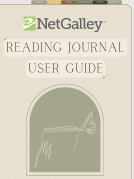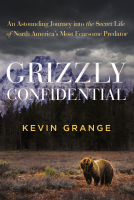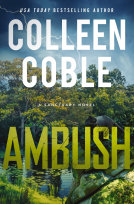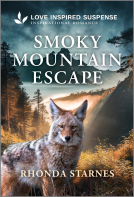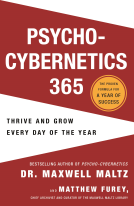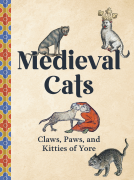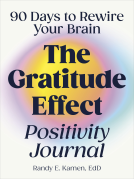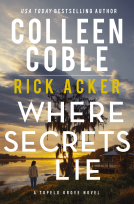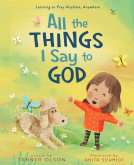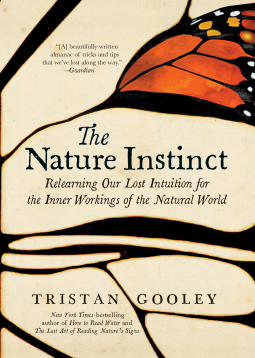
The Nature Instinct
Relearning Our Lost Intuition for the Inner Workings of the Natural World
by Tristan Gooley
This title was previously available on NetGalley and is now archived.
Send NetGalley books directly to your Kindle or Kindle app
1
To read on a Kindle or Kindle app, please add kindle@netgalley.com as an approved email address to receive files in your Amazon account. Click here for step-by-step instructions.
2
Also find your Kindle email address within your Amazon account, and enter it here.
Pub Date Nov 20 2018 | Archive Date Dec 04 2018
Talking about this book? Use #TheNatureInstinct #NetGalley. More hashtag tips!
Description
This file is NOT currently available for Kindle. We apologize for any inconvenience. If you have difficulties with downloading, please email us (at publicity@theexperimentpublishing.com) for assistance or leave a note in lieu of a review rating.
From the New York Times–bestselling author of How to Read Water—an exploration of our subconscious ability to “know” our surroundings even when we can’t explain how
Master outdoorsman Tristan Gooley has long encouraged his readers to look closely at the world to discover its hidden clues. Through careful cultivation of our senses, we can use the Big Dipper to tell time, for example, and a budding flower to find south.
In The Nature Instinct, we learn how to train ourselves through slow observation so that, ultimately, we can intuit the inner workings of the world around us without having to stop to think about it. In other words, readers learn how to develop an instinct for reading nature the way Gooley does. Discover how Gooley and other expert observers—from hunters in the English countryside to the Pygmy people in the African Congo—have recovered this lost sixth sense that unlocks a subconscious, deeper understanding of our surroundings. In this, the culmination of everything Gooley has written so far, you’ll learn how to find the forest’s edge when deep in the woods, or when a wild animal might pose danger—and you won’t even have to stop to think about how you know it.
A Note From the Publisher
Available Editions
| EDITION | Other Format |
| ISBN | 9781615194797 |
| PRICE | $24.95 (USD) |
| PAGES | 400 |
Links
Featured Reviews
Tristan Gooley's previous publications have been a staple in our bookshop and I expect The Nature Instinct will be the same. Almost a memoir in the sense of how his personal observations are interwoven into the text, Gooley has collected his observations from nature and provides a gentle guide for the reader on how to experience these natural phenomena yourself, whether in the city or country.
 Kim C, Educator
Kim C, Educator
Tristan Gooley’s books always make me want to go outside and explore! They are packed full of great tips for anyone who spends time outdoors. The Nature Instinct is no exception.
This book is one that every outdoor enthusiast has to have on their shelf. But, don’t let it sit on the shelf! Read it! The information in here is amazing!
As a wildlife tracker, I have completely fallen in love with Gooley’s books. The skills of observation and interpretation of the landscape that he uses are very similar to the skills a tracker uses. Gooley outlines how to use subtle clues on the landscape to not only navigate, but to read past events on the land too.
Many of these skills can’t be explained well. To an observer it almost looks like a sixth sense, which is what Gooley calls it. How else can you explain the intuitive way that he sees things and can explain them? Do you want to learn how to do this too? Then, you must read this book. It is packed with tips on how to do these things. It’s an excellent learning tool and also provides a starting point for you to begin your own local observations and start to know your environment in this kind of detail.
Nature is right outside your door. Go out there and start learning about it, and take this book with you!
 Jenn C, Reviewer
Jenn C, Reviewer
“The world is full of magic things, patiently waiting for our senses to grow sharper.” – W.B. Yeats
I remember the first time I went mushroom hunting, nearly 15 years ago, and the moment when it was like a light switched “on” and, all of a sudden, I could see the chanterelles everywhere, peeping out from under the duff. More than an “instinct” – it’s having a patient teacher to explain what to look for and spending time looking and absorbing one’s surroundings until it feels like an instinct.
Tristan Gooley is a gifted writer -- sharing his stories of his observations of signs of plants and animals and diving into details of scientific findings. His writing is so detailed – I wonder if he just spends time writing after he gets back home or if he jots down notes while he is afield.
While his writing is not as wild and captivating as some of John Muir’s stories – Gooley is providing a level of detail and making connections in a way that weave a story of the cloth of existence and how all creatures are connected. I never knew, for example, that robins could hear earthworms popping up out of the ground. While I have always known that cats, dogs and other animals have mood and character – I enjoyed the story about how dogs “play” humans with the head tilt and science confirming that many animals possess an awareness of mind and think about what other animals may be thinking/doing in the future.
I enjoyed reading about the differences in the way animals (prey/predator) see things – and have long ago learned the value of sidelong glances toward shy feral cats and other wild things. I love the term “jink” and have noticed this behavior in animals when hiking on trails but didn’t know it had a name. The story about raptors hunting away from their nests – and songbirds nesting near raptor nests – was brilliant.
My favorite story was about how the author went hiking in a new area, drumlins covered with zones of bracken and heather – and found himself compelled to walk in one area and return via the other, realizing later that he’d instinctively chosen the routes based on maintaining comfortable body temperature (without a jacket, on the return, the higher bracken provided a break from the wind). I also learned a lot about hedges – which we don’t have here in the US.
Gooley is a huge fan of the slow/fast thinking and references Daniel Kahneman’s “Thinking, Fast and Slow” several times (it’s on my pile to read, right after this one!).
It’s interesting that many people consider knowledge of the plants, animals and environment around the to be inaccessible. I remember asking a Spanish friend who lives on a small island called Mallorca, in a quaint small town of Palma, about some flowers. She insists that she is a “city girl” and really doesn’t know much about farming and plants. Even identifying the orchards on the side of the road as we whizzed by was outside her realm of knowledge. When showing a friend who lives in a gated-community in Colorado my 6 different types of basil, he commented “You’re the only botanist I know” (though I imagine as a fly fishing aficionado, he could tell me much about fish behavior). Another friend recently revealed to me that he hates the outdoors and avoids nature as much as possible.
There is much to see an analyze in modern urban, “civilized” life – as demonstrated from the breadth of effort expended on mindfulness, meditation, understanding human motivation and behavior (even the Kahneman book) – that one might make the argument that most humans have had to make the choice of paying attention to select things in their immediate environment that yield the most reward or benefit for the lifestyle to which they aspire.
Perhaps, what Gooley is implying, is that we need to step outside of our own minds and away from human society to pay attention to the greater web of plants, animals and environment around us to preserve those things we most value. There’s so much to learn -- and humans so easily get trapped into thinking they are the most important and interesting thing around. Maybe cats do, too.
I would have liked to have seen the author dive into more parallels between the human thought and observation process of the natural environment with the human and human-constructed environment, and perhaps a greater focus on the potential impact of our disconnect with the rest of the non-human world around us. Or, at least, the richness and reward of greater connection. Overall – quite an enjoyable book – my takeaways include a renewed commitment to memorizing constellations, “vegetalistas” of the Amazon, the “gokotta” – Swedish practice of rising early to experience people-free environments, “ikus” and “allelomimesis.” Zig-zagging off to read my next book…
Readers who liked this book also liked:
Maxwell Maltz, M.D., F.I.C.S.; Matthew Furey
Business, Leadership, Finance, Religion & Spirituality, Self-Help

